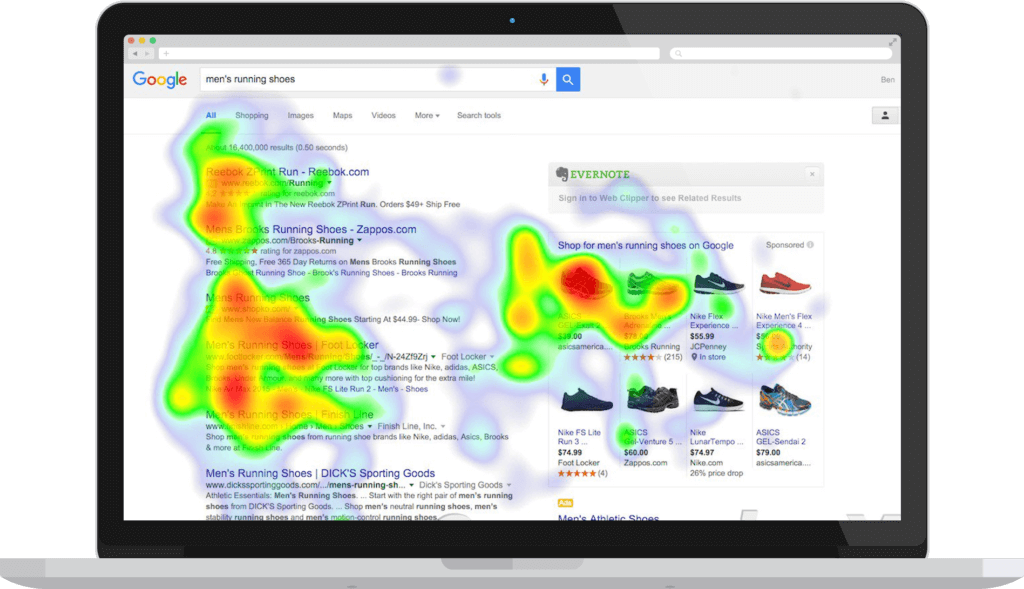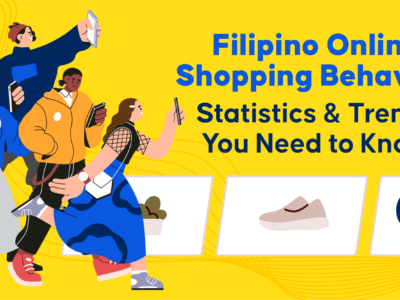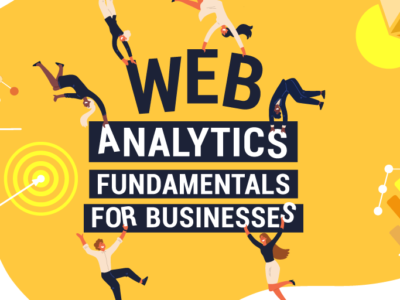Consumer data is becoming more and more essential in many business processes, especially when it comes to marketing. And it’s not just about the basic details like demographics—nowadays, the more specific the data, the better.
It’s easy to falsify information about one’s age, sex, location, or interests when it’s the people themselves inputting the data, but they can’t fake their own behavior or action.
Companies like Netflix, Amazon, and Google understand this—to know their audience better, they have to look at what they’re doing. Data analytics, specifically behavioral, can paint an accurate picture of what customers want and need, and quantitative insights show how and when to address them.
Behavioral analytics is the process of uncovering and understanding how and why buyers act the way they do on a website or app. It’s a way for marketers to make a more accurate prediction about their next moves. The building blocks of user behavior analysis are events, any interaction with your product, or any activity associated with the user.
With it, marketers can put the right offer in front of the right buyer at the right time. The use of behavioral analytics is relatively new, but according to a report by McKinsey, companies that have used it to generate insights outperform their peers in terms of sales growth by 85%, with more than 25% in gross margin.
Behavioral vs. Traditional and Declarative
With behavioral analytics, you can easily visualize a customer’s journey because there is centralized storage for all the data, making it easier to cross-reference and allowing marketers to have a deeper understanding of their customers. This can help them analyze customer data in totally new ways, thereby increasing their ability to generate traffic, convert leads, and close sales.
The same cannot be said with traditional analytics. You have to access different platforms to gather all the different data you need, e.g., Google Analytics for website traffic or Facebook Ads for ad campaign performance. This segmentation across platforms makes it hard to understand the customer journey.
As opposed declarative data, where information is provided by users willingly, behavioral data is seen as more advantageous because it’s all based on real activities and isn’t subjected to memory loss or lapses from the user. However, it would be better to use behavioral data alongside declarative data because there are instances where behavioral data isn’t available and companies need declarative data to back their analytics.
Analyzing Behavioral Data to Boost Results
-
Customer Acquisition
The new path to purchase involves multiple touchpoints and channels for weeks, months, or even years. The challenge for marketers is to effectively align teams and strategies with the customer journey while facing problems like the lack of a single view of the customer, fragmented data sources, and minimal budget.
Another challenge is the uniqueness of every customer—the different motivations, needs, values, and requirements demand personalization. So how can analyzing patterns in behavior offer valuable insights for easy customer acquisition?
-
Bring the best ROI through preferred channels
You can improve your ROI and reduce costs by using only the best marketing channels and executing programs and initiatives that can successfully advance different customer segments through to the end of the journey. A behavioral analytics platform can help you distinguish that as you merge revenue and cost data from sources like Google Analytics/AdWords or Facebook Ads.
This will also allow you to see in real time the ROI of all your marketing initiatives including KPIs (cost, revenue, clicks, conversion rate, impressions, etc.) at any level (channel, campaign, CTA, keyword, etc.). You can view your entire data spectrum at once and make better decisions based on relevant information with a holistic view of the buyer’s journey.
More importantly, the right tools will let you track, test, and analyze offers, CTA, market segments, and other elements to predict the effectiveness of your campaign.
-
Personalizing the path to purchase
You can increase conversions for key interaction points in the customer journey by aligning offers and messages with their most important purchase decision drivers and customer segments. For example, if you figure out that a huge 50% of sales prospects who sign up for a demo account eventually convert into customers, then start showcasing your product demo more prominently in your messaging.
-
Target high-value customers
Your most profitable customers will likely exhibit similar behaviors, so make sure to target these behaviors to acquire more customers. Look at what pages they’re visiting, what emails they’re opening, and what events they’re engaging with. Before you know it, you’ll be discovering new ways to maximize your top-performing assets and accurately target top-notch leads.
-
Customer Retention
Research by Esteban Kolsky showed that 67% of customers report bad experiences as a reason for churn (or stopping subscription to a service). Only 1 out of 26 unhappy customers complain, and 91% of the unhappy ones simply leave.
This shows that customers will rarely raise a red flag so companies will also infrequently detect negative customer experiences or poor satisfaction rates, and will likely not predict churn, bounce rates, and retention. However, through behavioral data, you can spot the red flags yourself to make sure that you can act on it early on.
-
Reduce churn by knowing its causes
Behavioral analytics can also help prevent churn by identifying the behaviors that precede it. You’d know what tactics to use to keep customers around. Naturally, once you understand churn, you can use the marketing tools at your disposal to reduce it.
-
Understand and segment customers better
It can be difficult to detect what’s causing user complaints, but with behavioral data, you have access to insights that were generally out of reach. You can understand your customers better, as well as realize the real impact of your marketing initiatives, the lifetime value of the users, and how likely your existing customers are to invite other people.
Audience segmentation is also essential, and you can use behavioral analytics to first segment users based on more relevant information, then market more effectively based on the behavioral data. With a deeper understanding of your buyers’ behavior, you’ll find new ways to segment them.
-
Optimization through cohort reporting
A cohort is a group of people sharing similar characteristics, and cohort reporting tracks and analyzes the group’s behavior over a set period. With this, you can monitor the reaction of your highly specific segments of users to your marketing initiatives. This will allow you to optimize around these segments’ behaviors rather than making broad optimization assumptions.
-
Customer Growth and Expansion
Customers won’t usually let you know when it’s a good time to sell them something. You can, however, introduce the right offers at the right time, and this can be made possible by looking at their actions. It’s likely that users don’t know you have something they want or need. Many consumers don’t even know what they want to begin with. Letting this pass means passing on possible conversion from cross-selling, upselling, or repeat purchase.
Again, knowing what to offer to which customers and when is in the data. Take a cue from Amazon’s “Customers who bought __ also bought __” recommendation CTAs. In the case, the cross-sell or upsell opportunities are determined through machine learning and predictive analytics.
Their recommendation algorithm (which drives 35% of their revenue) looks at users’ purchase history, shopping cart items, rated and liked products, and what other customers have viewed and purchased. However, it’s also important to consider customer satisfaction.
Clients who recently had negative experiences with you probably won’t be the ideal prospects to reach out with a cross-sell or up-sell offer. Instead of doing more damage, leverage behavior data to move them to the low-satisfaction segment and temporarily stop sending them specific promotional offers. Then, target them with retention-focused initiatives.
-
Offer relevant ads to consumers who will probably click it
Grow your business further by increasing the relevance of your ads placed in front of users, making them more likely to click through and convert. One of the main benefits of behavioral data is that it can be used for retargeting and remarketing efforts, which tend to have much higher ROIs.
Takeaways
There are many other advantages that you can get from collecting and analyzing behavioral data, but it can be summarized into risk assessment and targeted advertising. Targeted advertising refers to personalization, or improving the odds of it being seen by the right consumer, therefore increasing the chance of a desirable event.
Risk assessment, meanwhile, is about user segmentation and their risks. It can be used to create better predictive models, so instead of relying on static traits (details that will change over time like income or residence), risk-related products are tailored to the variance in behavior or action.
For instance, you can choose to work on low-satisfaction consumers differently or put the least priority for those who aren’t the most profitable, when possible.
Behavioral data analytics can help you understand your audience and their needs. But keep in mind that you need proper data audit and marketing optimization for it to be useful to your campaigns.







